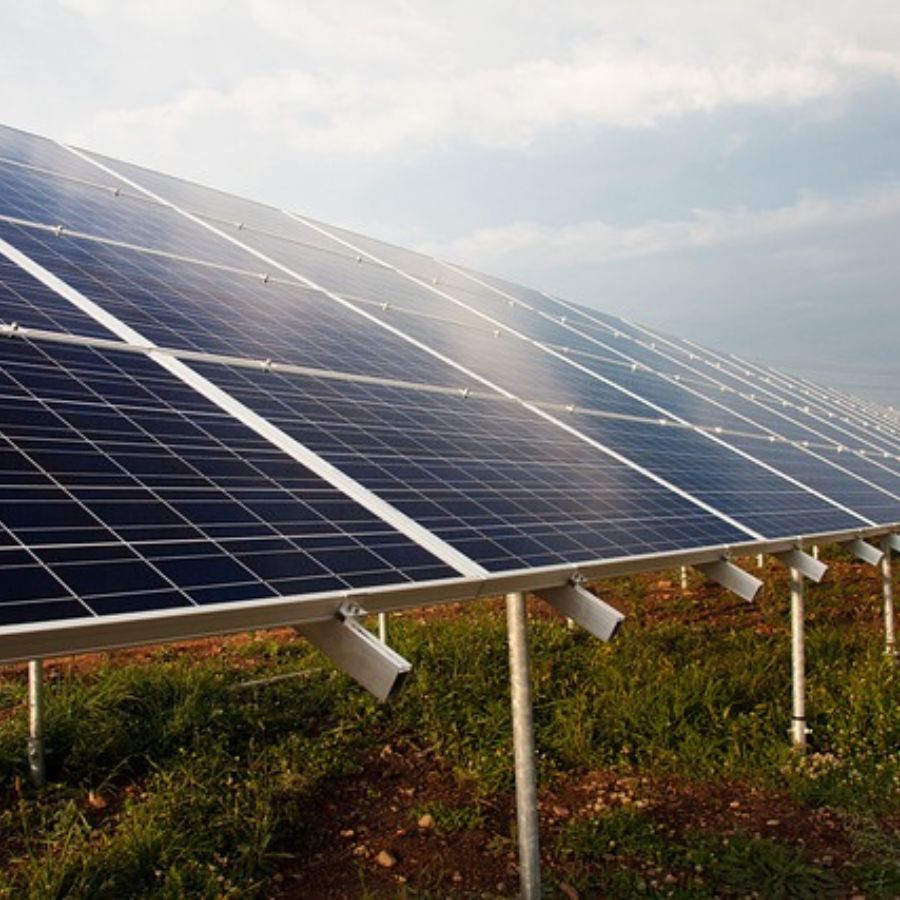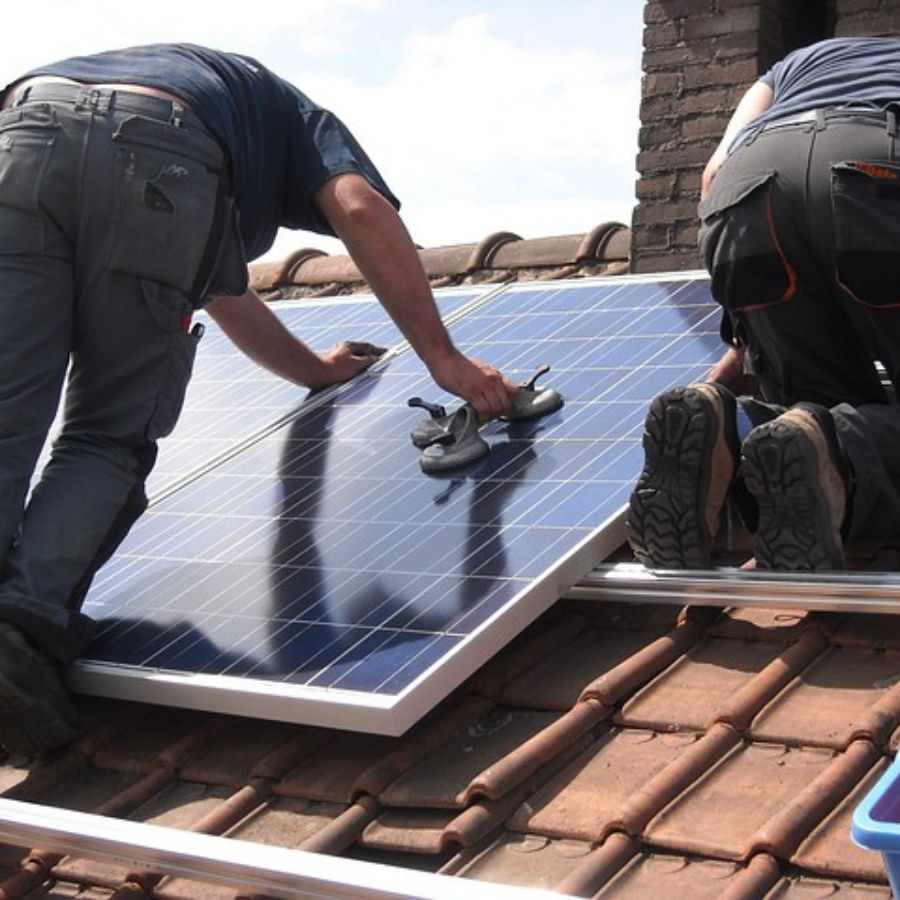Solar energy has gained significant traction in recent years. That is due to the urgent need for alternative energy sources that reduce dependence on fossil fuels and mitigate climate change. But how many kWh does a solar panel produce per day?
Solar panels harness the sun’s energy and provide a viable solution for generating electricity without harmful emissions.
By utilizing solar energy, we can reduce greenhouse gas emissions, combat air pollution, and work towards. It helps to achieve a more sustainable future.
Understanding how many kWh a solar panel produce per day is crucial for individuals, businesses, and policymakers.
Besides, the knowledge of solar panel output helps determine the feasibility and efficiency of solar energy systems.
Knowing the expected energy production is vital in decision-making, whether considering a residential solar panel system or a large-scale solar farm.
Understanding how many solar panels are needed to meet their energy requirements allows individuals and businesses to make informed choices. That is choices about system size, cost, and potential savings on electricity bills.
It enables homeowners and business owners to assess the economic viability of installing solar panels. Furthermore, it helps in estimating the payback period and return on investment. So let’s get started and determine how many solar panels you need for your solar system. Also, how much solar power a solar panel produces in kWh?
How Much Electricity Does a Solar Panel Generate?

Several factors influence the electricity generation of a solar panel. Such factors include its dimensions, effectiveness, geographical positioning, alignment, and prevailing weather conditions.
I will assume specific parameters based on typical solar panels and average conditions to give you particular figures.
On average, a standard-sized solar panel should have an area of around 1.6 square meters and an efficiency of approximately 20%. Moreover, it can produce about 250 to 350 watts of power under optimal conditions.
Acknowledging that these figures can vary considerably based on the factors above is crucial.
To determine how much electricity a solar panel can generate, we need to consider the amount of solar power it receives.
The amount of solar power depends on the geographical location and orientation of the panel.
Sunnier regions and a south-facing orientation generally receive more solar irradiation, producing higher energy.
For example, in a location with good sunlight exposure, each square meter of solar panel can receive approximately 1,000 watts of solar power on a clear day.
A standard-sized panel of 1.6 square meters can receive around 1,600 or 1.6 kilowatts (kW) of solar power.
Assuming an average efficiency of 20% for the panel, it would convert around 320 watts or 0.32 kilowatts (kW) of solar power into usable electricity.
Therefore, a single solar panel in these conditions could generate approximately 0.32 kW of electricity.
Calculation of How Many kWh Does a Solar Panel Produce Per Day
Consider several factors to determine how many kilowatt-hours (kWh) a solar panel produces daily.
Let’s break down the calculation using an example of a solar panel with a rating of 400 watts.
Understanding the Solar Panel Rating
The rating of a solar panel represents its maximum power output under standard test conditions. In this example, we have a solar panel with a rating of 400 watts.
It means that under ideal conditions, the panel can generate 400 watts of power.
Accounting for Sunlight Availability
The amount of sunlight available in a specific location plays a crucial role in determining the daily energy production of a solar panel.
Sunlight availability is typically in terms of daily sun hours. It represents the hours when the solar radiation is equivalent to 1,000 watts per square meter (W/m²).
Let’s assume our example location receives an average of 5 sun hours daily.
It means exposing the solar panel to 5 hours of full sunlight intensity.
Accounting For Efficiency
Solar panel efficiency refers to the panel’s ability to convert sunlight into electricity.
To calculate the actual energy output of the solar panel, we need to consider its efficiency.
For this example, let’s assume the panel has an efficiency of 25%.
Calculation of Daily Energy Production
To calculate the daily energy production of that solar panels produce in kilowatt-hours (kWh), we can follow these steps:
Step 1: Convert the rating of the solar panel from watts to kilowatts:
400 watts = 0.4 kilowatts
Step 2: Multiply the rating by the number of sun hours:
0.4 kilowatts x 5 sun hours = 2 kilowatt-hours
Step 3: Account for the panel’s efficiency:
2 kilowatt-hours x 0.25 (panel efficiency) = 0.5 kilowatt-hours
Therefore, based on this example, the solar panel produces approximately 0.5 kilowatt-hours (or 500 watt-hours) daily.
It’s important to note that this calculation represents an estimate. The estimation may vary depending on various factors, including weather conditions, shading, panel orientation, and system losses.
Additionally, the actual energy production may fluctuate daily due to variations in sunlight intensity and weather patterns.
To determine the total energy production of a solar system or how much power you can expect, consider the number of solar panels in the system. Then, multiply the daily energy production per panel by the total number of panels.
In conclusion, calculating the kWh a solar panel produces per day involves considering the panel’s rating, sunlight availability, and efficiency.
By accounting for these factors, individuals and businesses can estimate the daily energy output of their solar panel installations. In addition, it provides valuable insights into the system’s power generation potential.
Things That Affect Solar Panel Production
Solar Panel Efficiency
Solar panel efficiency refers to the ability of a solar panel to convert sunlight into electricity and how much electricity solar panels produce. In addition, it measures how effectively solar panels can generate power from the available solar energy.
The efficiency of solar panels is typically expressed as a percentage, representing the ratio of the energy it produces compared to the energy it receives from the sun.
You get solar panel output efficiency by dividing the output power of the solar panel by the input power received from the sunlight.
The solar irradiance (amount of sunlight) and the panel’s surface area determine the input power. The output power is the electrical energy produced by solar panels.
Factors Influencing Efficiency
Type and Quality of Solar Cells
The type and quality of solar cells used in a solar panel significantly impact its solar panel output.
Different technologies, such as monocrystalline, polycrystalline, and thin film, have varying efficiency levels. For example, monocrystalline solar cells have higher efficiencies than polycrystalline or thin-film cells.
Temperature and Sunlight Intensity
Solar panel output efficiency decreases as the temperature rises. High temperatures can cause a decrease in the voltage and output power of the panel.
Similarly, lower sunlight intensity, such as during cloudy or overcast days, can reduce the efficiency of solar panels.
Dust, Shading, and Obstructions
Accumulating dust, dirt, or other debris on the surface of solar panels can reduce their efficiency. It does that by blocking sunlight and reducing the light absorbed by the cells.
Shading from nearby structures, trees, or even other panels within the array can also significantly impact solar panel output.
Tilt and Orientation of Panels

The tilt and orientation of solar panels affect their exposure to sunlight.
Solar panels should be angled and positioned for optimal energy production to maximize sunlight absorption throughout the day.
The ideal tilt and orientation depend on the geographical location and latitude. Therefore, panels that must be appropriately aligned may receive less solar irradiance, leading to lower energy production.
Considering these factors is crucial when determining how much energy a solar panel can produce.
One can maximize solar panels’ efficiency and overall energy output by selecting high-quality solar panels. Also, ensuring regular cleaning and maintenance, minimizing shading and obstructions, and optimizing the tilt and orientation can help.
It’s important to note that the average solar panel efficiency varies based on the technology and quality of the panels. Generally, standard crystalline silicon solar panels have an average efficiency range of 15% to 20%.
However, advanced panels utilizing newer technologies can achieve higher efficiencies of up to 22%. The technologies include monocrystalline PERC (Passivated Emitter Rear Contact) or bifacial solar panels.
Understanding the factors influencing solar panel efficiency helps individuals and businesses make informed decisions. That is, decisions about system design, panel selection, and maximizing the energy output of their solar installations.
Considering these factors makes it possible to estimate how much energy solar panels can produce accurately. In addition, it ensures optimal utilization of solar power resources.
Frequently Asked Questions
How Many Solar Panels Do I Need to Produce kWh per Day?
The number of residential solar panels needed to produce a specific kilowatt-hour (kWh) per day depends on various factors.
Such factors include the solar panels’ power rating and the average sunlight availability in your location.
Furthermore, to determine the required solar panels, divide the desired daily kWh by the average daily kWh production per PV panel.
For example, if each solar panel system produces 5 kWh per day and you want to generate 20 kWh daily, you would need four solar panels.
How Many Solar Panels Do I Need for 30kWh per Day?
To determine the number of solar panels needed to generate 30 kWh per day, consider the solar panels’ power rating and the average daily kWh production per panel.
Let’s assume each solar panel system produces 6 kWh per day. In this case, you would require five solar panels to achieve a daily output of 30 kWh.
How Much Power Does a 400-Watt Solar Panel Produce Per Day?
The power output of a PV panel is typically in watts (W) or kilowatts (kW).
A 400-watt PV panel refers to its power rating, representing the maximum power output it can achieve under ideal conditions.
The actual daily energy production of a 400-watt PV panel depends on factors such as sunlight availability and panel efficiency.
On average, a 400-watt solar panel can generate around 1.6 to 2.4 kWh of energy per day, depending on location and other factors.
It’s essential to consult specific specifications from solar panel manufacturers. Lastly, one can use solar energy calculators to get a more accurate estimate for your particular situation.


Leave a Reply